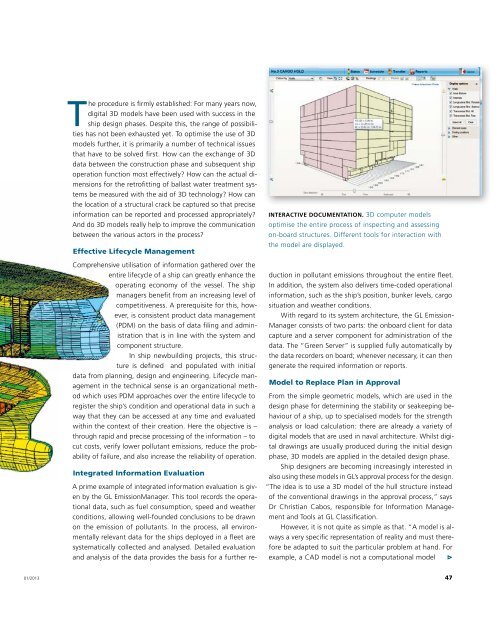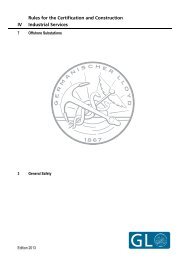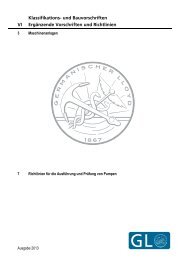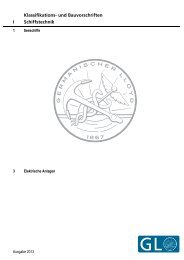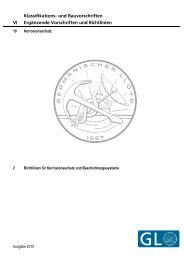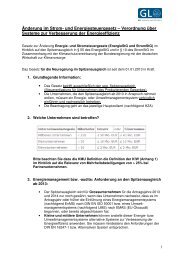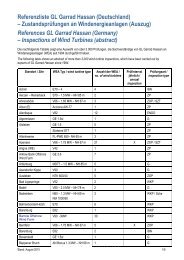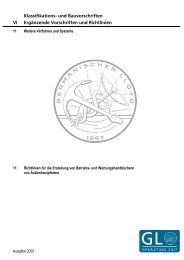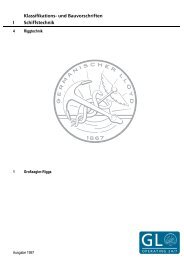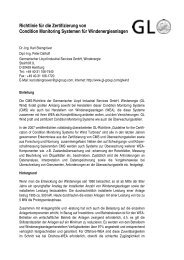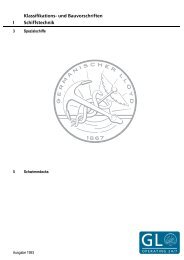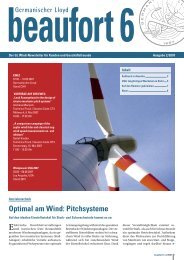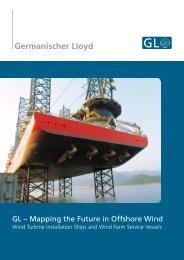Ways to Conserve Energy on Board - DNV
Ways to Conserve Energy on Board - DNV
Ways to Conserve Energy on Board - DNV
You also want an ePaper? Increase the reach of your titles
YUMPU automatically turns print PDFs into web optimized ePapers that Google loves.
The procedure is firmly established: For many years now,<br />
digital 3D models have been used with success in the<br />
ship design phases. Despite this, the range of possibilities<br />
has not been exhausted yet. To optimise the use of 3D<br />
models further, it is primarily a number of technical issues<br />
that have <str<strong>on</strong>g>to</str<strong>on</strong>g> be solved first. How can the exchange of 3D<br />
data between the c<strong>on</strong>structi<strong>on</strong> phase and subsequent ship<br />
operati<strong>on</strong> functi<strong>on</strong> most effectively? How can the actual dimensi<strong>on</strong>s<br />
for the retrofitting of ballast water treatment systems<br />
be measured with the aid of 3D technology? How can<br />
the locati<strong>on</strong> of a structural crack be captured so that precise<br />
informati<strong>on</strong> can be reported and processed appropriately?<br />
And do 3D models really help <str<strong>on</strong>g>to</str<strong>on</strong>g> improve the communicati<strong>on</strong><br />
between the various ac<str<strong>on</strong>g>to</str<strong>on</strong>g>rs in the process?<br />
Effective Lifecycle Management<br />
Comprehensive utilisati<strong>on</strong> of informati<strong>on</strong> gathered over the<br />
entire lifecycle of a ship can greatly enhance the<br />
operating ec<strong>on</strong>omy of the vessel. The ship<br />
managers benefit from an increasing level of<br />
competitiveness. A prerequisite for this, however,<br />
is c<strong>on</strong>sistent product data management<br />
(PDM) <strong>on</strong> the basis of data filing and administrati<strong>on</strong><br />
that is in line with the system and<br />
comp<strong>on</strong>ent structure.<br />
In ship newbuilding projects, this structure<br />
is defined and populated with initial<br />
data from planning, design and engineering. Lifecycle management<br />
in the technical sense is an organizati<strong>on</strong>al method<br />
which uses PDM approaches over the entire lifecycle <str<strong>on</strong>g>to</str<strong>on</strong>g><br />
register the ship’s c<strong>on</strong>diti<strong>on</strong> and operati<strong>on</strong>al data in such a<br />
way that they can be accessed at any time and evaluated<br />
within the c<strong>on</strong>text of their creati<strong>on</strong>. Here the objective is –<br />
through rapid and precise processing of the informati<strong>on</strong> – <str<strong>on</strong>g>to</str<strong>on</strong>g><br />
cut costs, verify lower pollutant emissi<strong>on</strong>s, reduce the probability<br />
of failure, and also increase the reliability of operati<strong>on</strong>.<br />
Integrated Informati<strong>on</strong> Evaluati<strong>on</strong><br />
A prime example of integrated informati<strong>on</strong> evaluati<strong>on</strong> is given<br />
by the GL Emissi<strong>on</strong>Manager. This <str<strong>on</strong>g>to</str<strong>on</strong>g>ol records the operati<strong>on</strong>al<br />
data, such as fuel c<strong>on</strong>sumpti<strong>on</strong>, speed and weather<br />
c<strong>on</strong>diti<strong>on</strong>s, allowing well-founded c<strong>on</strong>clusi<strong>on</strong>s <str<strong>on</strong>g>to</str<strong>on</strong>g> be drawn<br />
<strong>on</strong> the emissi<strong>on</strong> of pollutants. In the process, all envir<strong>on</strong>mentally<br />
relevant data for the ships deployed in a fleet are<br />
systematically collected and analysed. Detailed evaluati<strong>on</strong><br />
and analysis of the data provides the basis for a further re-<br />
Interactive Documentati<strong>on</strong>. 3D computer models<br />
optimise the entire process of inspecting and assessing<br />
<strong>on</strong>-board structures. Different <str<strong>on</strong>g>to</str<strong>on</strong>g>ols for interacti<strong>on</strong> with<br />
the model are displayed.<br />
ducti<strong>on</strong> in pollutant emissi<strong>on</strong>s throughout the entire fleet.<br />
In additi<strong>on</strong>, the system also delivers time-coded operati<strong>on</strong>al<br />
informati<strong>on</strong>, such as the ship’s positi<strong>on</strong>, bunker levels, cargo<br />
situati<strong>on</strong> and weather c<strong>on</strong>diti<strong>on</strong>s.<br />
With regard <str<strong>on</strong>g>to</str<strong>on</strong>g> its system architecture, the GL Emissi<strong>on</strong>-<br />
Manager c<strong>on</strong>sists of two parts: the <strong>on</strong>board client for data<br />
capture and a server comp<strong>on</strong>ent for administrati<strong>on</strong> of the<br />
data. The “Green Server” is supplied fully au<str<strong>on</strong>g>to</str<strong>on</strong>g>matically by<br />
the data recorders <strong>on</strong> board; whenever necessary, it can then<br />
generate the required informati<strong>on</strong> or reports.<br />
Model <str<strong>on</strong>g>to</str<strong>on</strong>g> Replace Plan in Approval<br />
From the simple geometric models, which are used in the<br />
design phase for determining the stability or seakeeping behaviour<br />
of a ship, up <str<strong>on</strong>g>to</str<strong>on</strong>g> specialised models for the strength<br />
analysis or load calculati<strong>on</strong>: there are already a variety of<br />
digital models that are used in naval architecture. Whilst digital<br />
drawings are usually produced during the initial design<br />
phase, 3D models are applied in the detailed design phase.<br />
Ship designers are becoming increasingly interested in<br />
also using these models in GL’s approval process for the design.<br />
“The idea is <str<strong>on</strong>g>to</str<strong>on</strong>g> use a 3D model of the hull structure instead<br />
of the c<strong>on</strong>venti<strong>on</strong>al drawings in the approval process,” says<br />
Dr Christian Cabos, resp<strong>on</strong>sible for Informati<strong>on</strong> Management<br />
and Tools at GL Classificati<strong>on</strong>.<br />
However, it is not quite as simple as that. “A model is always<br />
a very specific representati<strong>on</strong> of reality and must therefore<br />
be adapted <str<strong>on</strong>g>to</str<strong>on</strong>g> suit the particular problem at hand. For<br />
example, a CAD model is not a computati<strong>on</strong>al model<br />
01/2013<br />
47


